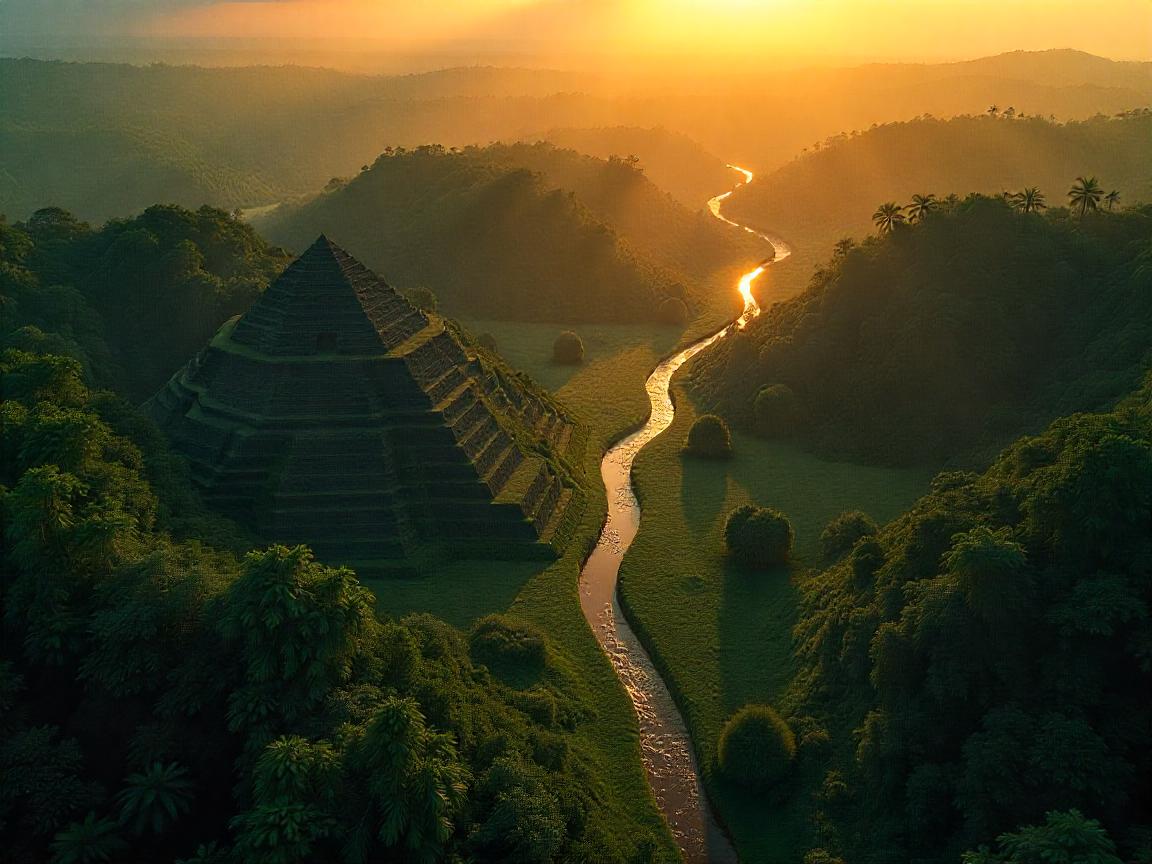
Over the centuries, explorers and scientists treated the Amazon as green desert- it could not support huge complex civilizations. The oral reportings of indigenous people of lost great cities being consumed by the jungle lacked evidence and was attributed to myth. But now, courtesy of LIDAR ( Light Detection and Ranging ) we are scooping away time and vegetation to expose something magical: the lost urban interconnection complex that was bigger and as advanced as the Maya.
It is not the mere tale of ruins. It is revelatory, changing history and questioning colonial narratives and making us rethink what we know about human survival in one of the harshest environments of this planet.
The LIDAR Revolution: Seeing Through the Jungle’s Veil
Consider a city completely covered by a dense, obstructionless canopy– one, at which not even the satellites could run through. LIDAR is where it enters the picture. Archaeologists can virtually clear away vegetation by shooting a million pulses of laser off airplanes and uncovering long lost structures.
In 2022, anarchic ruins in the Llanos de Mojos region of Bolivia was discovered, consisting of 26 interconnected civilisations with pyramids, causeways and large water storage facilities, invisible to the naked eye. One of the buildings is more than 500-1400 AD which during that time Europe was still trying to come out of the Dark Ages.
That is equivalent to finding another Rome in the heart of the jungle, Dr. Jose Iriarte, one of the most notable archeologists of the University of Exeter says. The sheer size implies tens of thousands of population, something that we never read about in textbooks.
and what is more surprising? These were not mere agglomerations of huts. They were well-planned cities with elevated roads, festivals places, and elaborate agricultural zones.
Garden Urbanism: How the Amazon’s “Lost Cities” Thrived
As opposed to the stone pyramids of the Maya, these Amazonian civilizations erected using earth- shaping the terrain into terraces, canals and fish farms which supported numerous people. A case example is the Casarabe Culture (500-1400 AD), in Bolivia who built monumental centers, which had moats and causeways, indicating a well organized society.
- Raised fields eliminated the problem of floods and increased the production of crops.
- Over centuries, agroforestry methods supplemented the fertility of soil.
- There were systems of water management as competitive as in ancient Persia.
This is because they did not fight nature; they teamed up with it, indicates Dr. Heiko Prumers, the head of the LIDAR study. It was a community, which had learned the art of sustainability at a time when the word did not even exist.
Real-World Analogy-It is like the ancient permaculture. While, europeans were running out of soils by over-farming them, Amazonians were creating ecosystems that survived centuries at a time.
The Great Vanishing: Why Did These Cities Disappear?
Why then did these societies collapse after being so advanced? There were no written records left by them as in the case of the Maya; they never wrote and left only earthworks. Some theories:
- European diseases could have destroyed the heirs before historians came about.
- Climatic changes in and around 1400 AD might have caused disruption of the water systems.
- Overexploitation? Or were they just Giving and migrating?
A Parallel of Ghosts:
According to ethnobotanist Dr. Carolina Levis, their downfall may have been caused by the same deforestation which is currently taking its toll on the Amazon. History does not repeat but it rhymes.
Why This Discovery Changes Everything
- Indigenous Knowledge Vindicated: Oral traditions told stories about these cities when their existence was only a time pass pastime- now science has uncovered them.
- Green Lessons: Their modes of land usage may be related to contemporary protection.
- Policy Changes: Serious appeals to save these locations against logging and mining.
Case Study: In 2023, an example of gold mining sisters in Peru unintentionally damaged an earthwork that was previously unrecorded and not even known to scholars- and an example of the race to record these works before they are lost forever.
Final Thought: A Warning from the Past
The Amazon did not represent a wilderness. It was an alive, designed landscape, and it is a demonstration that humans and our environment can co-exist. Moreover, it is also a reminder of lessons: civilizations come up and collapse, and many times collapse upon themselves.
“We are at the same cross road now, warns Dr. Iriarte. Will we get the lesson contained in their legacy, or repeat the same mistake?“
What’s Next?
- Expanded LIDAR scans can demonstrate hundreds of mislaid cities.
- The archaeology led by indigenous people should be put in the first place.
- International urge to preserve these places before it is too late.
The jungle preserved its secrets during 500 years. It is now actually talking. Do we hear it?